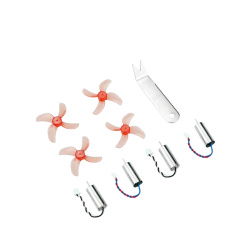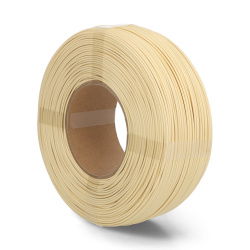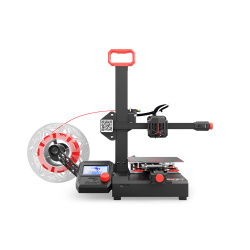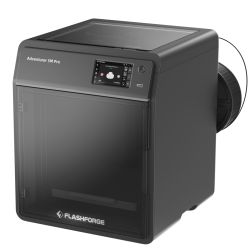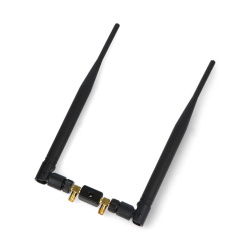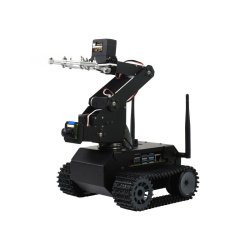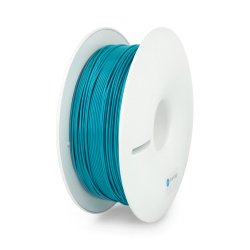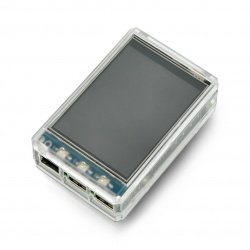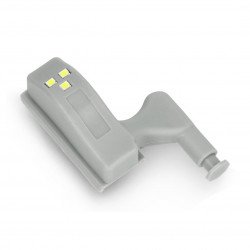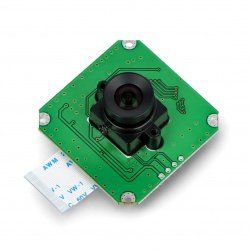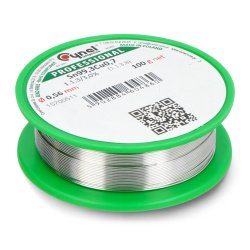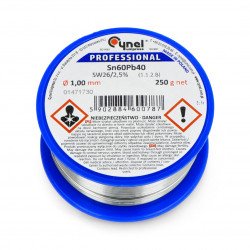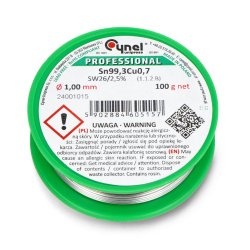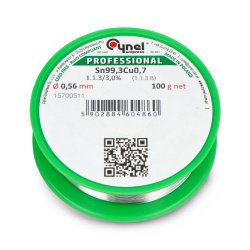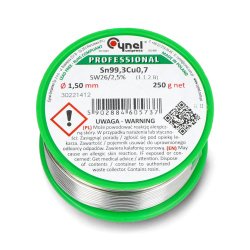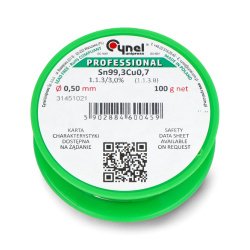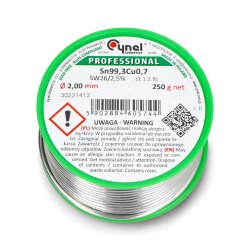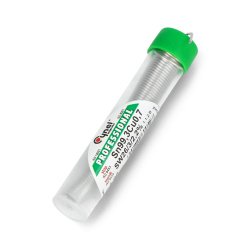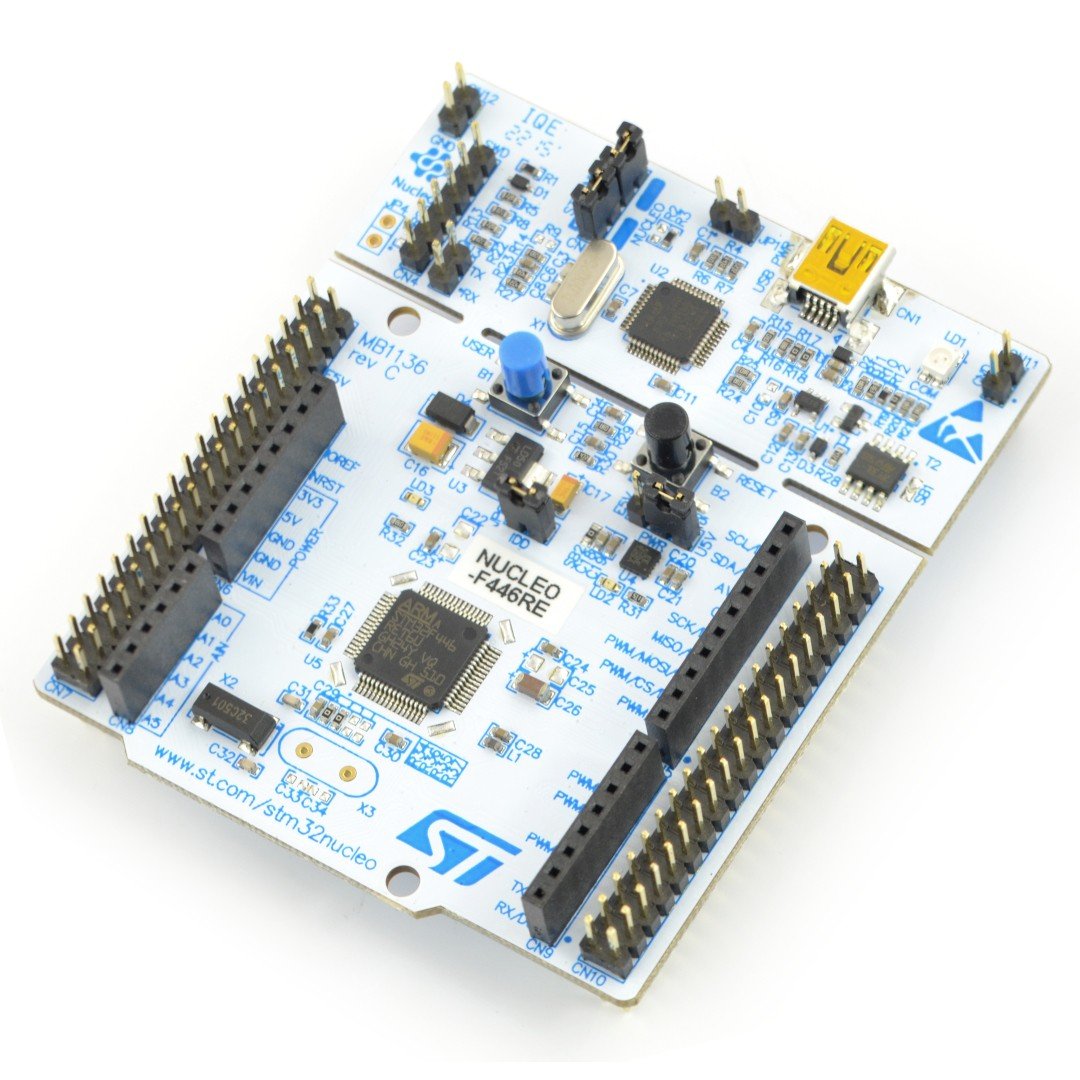Soldering is one of the ways to permanently combine the two elements. They are used in the area of electronics and electrical engineering, using solder pastes and solder tin. There are also joints connecting the two products. The choice of the right joint is important for the quality and durability of the assembly of the components that are ultimately to be found in electrical circuits or on PCBs. It depends on this factor, among others, how well the whole device will function. In the offer of the Botland store you will find a lot of products designed for connecting and fixing elements using a soldering iron. They are used both in THT and SMD technology. If you are just beginning your adventure with soldering, in addition to the soldering iron, one of your first purchases should be a bonding agent, that is tin and soldering paste. You should know that both products differ slightly in their properties and the same purpose. You should have both of them in your equipment in order to be able to choose the right one for the specific work you are currently doing.
Soldering tin in tube Cynel LC99 EVO 14g/1mm - lead-free
Solder tin with EVO flux placed in a plastic vial. The composition of the alloy is Sn99Cu0.7Ag0.3 and it does not contain lead , making it safer for the user. The weight...Cynel LC60 - solder tin 100g / 0.7mm
Soldering tin with flux, diameter 0.70 mm, in a 100 g spool.Soldering tin Cynel LC60 100g/1,00mm
Soldering tin with a diameter of 1.00 mm in a 100 g spool.Soldering tin in tube Cynel LC99,3 SW26 14g/1mm - lead-free
Lead-free solder placed in a plastic vial. The composition of the alloy is Sn99.3Cu0.7 . The vial contains 14 g of material with a diameter of 1 mm . Halide flux SW26...Soldering paste Easy Print Sn96.5 Ag3 Cu0.5 - syringe 1.4ml
Paste type No Clean for soldering SMD components. Based on a welding flux No Clean. It is characterized by good adhesion and dampness of the soldered surface. Works with...Solder Cynel LC99,3 SW26 100g/1mm - lead-free
Lead -free solder with SW26 flux. The composition of the alloy is Sn99.3Cu0.7 . The weight of the material wound on a plastic spool is 100 g and its diameter is 1 mm ....Solder Cynel LC60 250g / 0,56mm
Soldering tin with flux of 0.56 mm diameter in a 250 g spool. Consists of Sn60Pb40. Wire diameter is 0.56 mm. Melts already at 190°C. Used in the electrical industry.Solder Cynel LC99.3 250g/0,7mm - lead-free
Lead- free solder tin containing flux 1.1.3 . The composition of the alloy is Sn99.3Cu0.7 . The product will be used in the electronics industry, both for professional and...Solder Cynel LC99.3 100g/0,7mm - lead-free
Lead-free solder with flux 1.1.3 . The composition of the alloy is Sn99.3Cu0.7 . The plastic spool contains 100 g of material with a diameter of 0.7 mm . The melting...Solder Cynel LC99.3 100g/0,56mm - lead-free
Lead-free solder with flux 1.1.3 . The composition of the alloy is Sn99.3Cu0.7 . The weight of the material wound on a plastic spool is 100 g and its diameter is 0.56 mm...Solder Cynel LC99 100g/0,56mm - lead-free
Lead- free solder with flux 1.1.3 . The composition of the alloy is Sn99Cu0.7Ag0.3 . The weight of the product wound on a plastic spool is 100 g and its diameter is...Solder Cynel LC99,3 SW26 250g/1,5mm - lead-free
Cynel's lead -free solder. The composition of the alloy is Sn99.3Cu0.7 . The binder contains a halide flux SW26 , which ensures very good solderability. The material will...Solder Cynel LC99,3 SW26 100g/2,5mm - lead-free
Cynel's lead -free solder. The composition of the alloy is Sn99.3Cu0.7 . The binder contains a halide flux SW26 , which ensures very good solderability. The material will...Solder Cynel LC99.3 100g/0,5mm - lead-free
Lead- free solder tin containing flux 1.1.3 . The composition of the alloy is Sn99.3Cu0.7 . The product will be used in the electronics industry, both for professional and...Solder Cynel LC99,3 SW26 100g/3mm - lead-free
Cynel's lead -free solder. The composition of the alloy is Sn99.3Cu0.7 . The binder contains a halide flux SW26 , which ensures very good solderability. The material will...Solder Cynel LC99.3 100g/1mm - lead-free
Lead- free solder with flux 1.1.3 . The product is wound on a plastic spool. Its weight is 100 g and its diameter is 1 mm . The composition of the alloy is Sn99.3Cu0.7...Solder Cynel LC99,3 SW26 250g/2mm - lead-free
Cynel's lead -free solder. The composition of the alloy is Sn99.3Cu0.7 . The binder contains a halide flux SW26 , which ensures very good solderability. The material will...Solder Cynel LC99 100g/1mm - lead-free
Lead-free solder with flux 1.1.3 . The weight of the product is 100 g and its diameter is 1 mm . The composition of the alloy is Sn99Ag0.3Cu0.7 . The melting point of...- On sale!
Soldering tin in tube Cynel LC99,3 SW26 10g/1mm - lead-free
10 g of solder with a diameter of 1 mm placed in a plastic vial. The composition of the alloy is Sn99.3Cu0.7 , which means that it does not contain lead and is safer for...See also
Which solder filler is best to choose?
When selecting a soldering binder to suit your needs, it is required that its melting point is low enough and that, after its application, the soldered joint is solid and visually smooth and shiny - brittle, dull connections may cause the so-called cold solder joints and result in device malfunctions. Tin production takes place, among others, in the so-called continuous casting process.
Tin covers, among others: metal alloys with a thin anti-corrosion layer, thanks to which tin items are characterized by increased resistance to external factors.
Soldering tin for soft soldering - additional information
The chemical composition of the soldering binder also influences the quality of the soldering process and its final result. The most popular proportion for solder paste is 60% tin and 40% lead , which acts as a flux and facilitates soldering. Additionally, it has a low melting point, which makes it possible to solder materials such as copper.
Moreover, if we are soldering SMD components , it is worth using soldering paste with an increased metal content for this task. The right soldering paste will allow you to fully use the parameters of the soldering iron. The described solder is available in the α and β versions. The first one is called gray tin. In turn, the β variety is silvery-white in color. This type of solder is called white tin. The largest deposits of tin are located in China.
Soldering tin - Many uses
Soldering tin - In addition to the qualitative factor, you should also pay attention to the quantitative factor. Depending on what you need to solder, you should select the appropriate cross-section of the solder wire - in the case of small electronic devices (including those containing SMD elements), where high soldering precision and small spaces between elements are required, a good choice will be soldering tin with a diameter of 0.25mm to 1.00mm.
If you need to solder connections in circuits with wires with diameters that allow the passage of large currents, it is worth using tin with a correspondingly larger diameter, because the size of the solder also affects the ease of soldering and its final effect.
Additional information about soft soldering tin
Do you want to know the price of soldering pastes and tins? Check out our range of solder pastes. Tins available in our store are the highest quality products. The composition of the alloy enables the production of durable and smooth solders.
The offered tin alloy, and more specifically the composition of the alloy, guarantees a durable and solid connection of soldered elements. Do you have questions about tin? Or maybe you are interested in another product? We encourage you to contact our experienced advisors. Sellers will be happy to answer questions (including those related to tin and flux) and help you choose the right product tailored to your specific expectations. We also encourage you to create an account in the Botland online store (it is not required to place orders).
Tins and solder pastes - FAQ
Solder binders should have a sufficiently low melting point. The soldered connection must be solid, smooth and shiny, because brittle, dull connections are the cause of the so-called cold solder joints and device malfunctions. A popular proportion is 60% tin and 40% lead, which acts as a flux and facilitates soldering.
When working with small devices (e.g. SMD elements), soldering tin with a diameter of 0.25 mm to 1 mm will be useful. If you are soldering connections in circuits with wires with diameters that allow high currents to pass through, use larger diameter tin.
Soldering tin is a friend of everyone who takes up soldering . It is useful wherever electronics engineers, electrical engineers and beginners expect to quickly and precisely connect really small components. Let us add that it is a soldering alloy - tin is a quite colloquial and general term - which we "pour" around the soldered object.
Anything applied incorrectly or in excess can be a poison. Tin, silver and copper present in solder are substances harmful to humans (check NDS - the highest permissible concentration). This is an inhalation hazard, not irritating or corrosive to the skin, so the person soldering should not inhale the fumes, and it is best to use an exhaust hood .
Soldering tin is a fairly cheap but very useful complementary accessory. For example, a spool of the recommended and used tin with flux Cynel 100g with a diameter of 0.7 mm costs less than PLN 30. It's best to look here to compare the weights and diameters of the products - tin in a vial is usually even cheaper.

































































































































































































































































































































